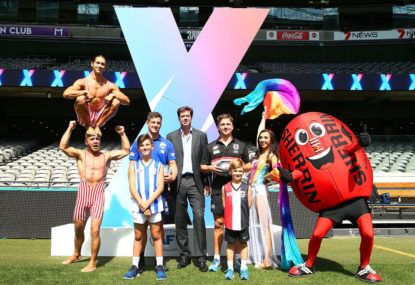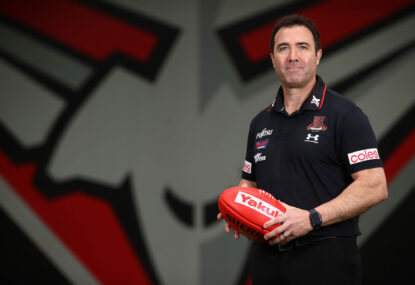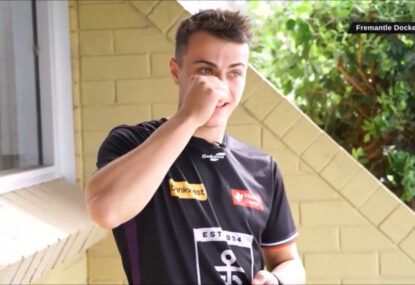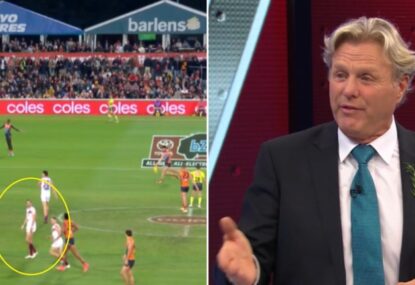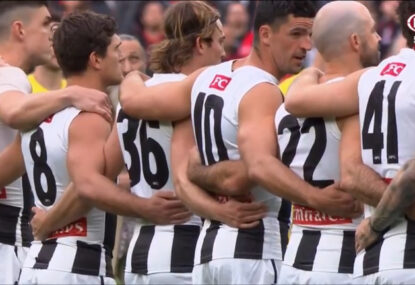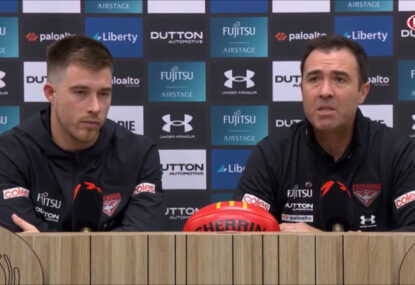The AFLX was meant to be about the viewer experience, yet it failed to deliver.
It would seem that AFL management sat down and thought about possibilities – how doing this or that or whatever else might entertain.
This can lead to good ideas, yet in this case, it needed to be reframed back to the conditions that create atmosphere.
The problem with atmosphere is that it’s elusive. It’s felt, not touched, and our common-sense impressions of it make it difficult to manufacture.
Research shows that this is because we are largely unaware of how we experience atmosphere as it unfolds in time. Instead, we assume that atmosphere is what we think of it. But this is a mental short-cut made after the fact.
We experience atmosphere through variations in time. It’s dependent upon what comes before and the anticipation of what comes next, like the crescendo of a symphony, which builds and reduces in order to hit that final, impactful moment.
Yet the AFLX was a blur.
It was played more or less at the same speed. And if that wasn’t enough, there were immediate kick-ins.
As Chris Fagan recently put it, there wasn’t any time for players and fans to celebrate it, to enjoy it – and, by extension, to feel it. If everything is the same fast-pace, then none of it is fast-paced.
Bring the ball back to the middle – at the very least, bring it back to the middle after a super-goal.
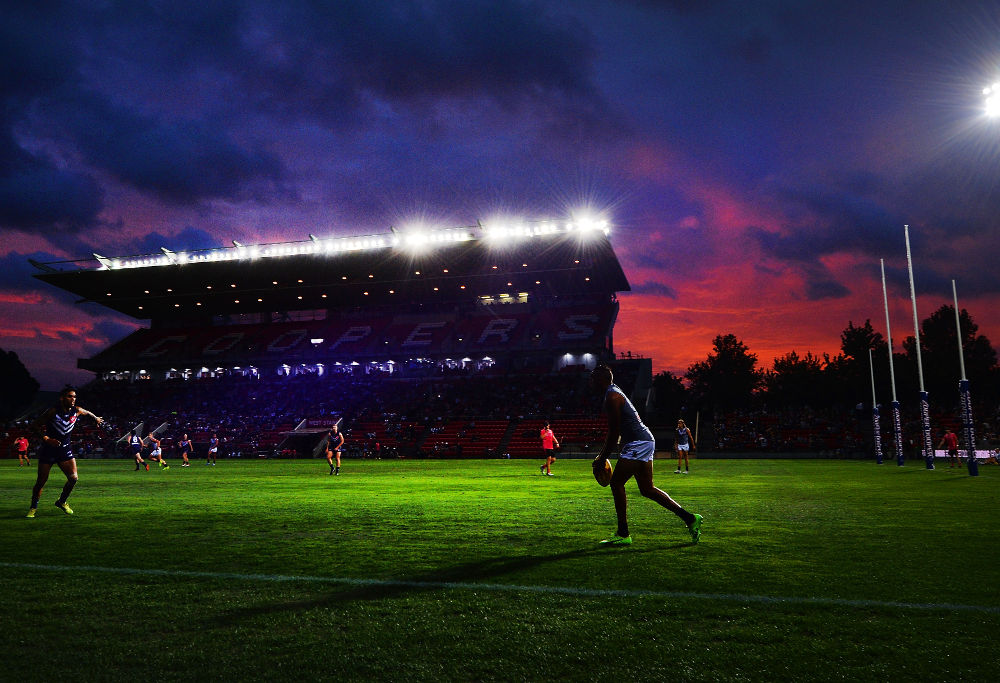
Photo by Mark Brake/Getty Images
The best bits in (regular) footy are the variations: the celebration of goals, the fast-breaks, the goals against play, the scintillating scoring of a team in a particular quarter, the very close games.
But this is only so because it doesn’t happen all of the time.
As for super-goals (do we have to call them Zooper goals?), their purpose should be to intensify the game. Yet with so many goals kicked from outside the 40-metre arc, the impact was lost.
Perhaps a super-goal could shift further out. If the ground was kept to 100 metres (the minimum length of a soccer pitch) then a super-goal could simply be marked by a half-way line. That would also be an incentive to play down the middle. And since it would reduce super-goals, it would mean something when they were kicked.
As for amateur teams, they could shift the goal-posts in order to meet their respective abilities.
[latest_videos_strip category=”afl” name=”AFL”]
Another example is the fluorescing of the goal-posts after all goals. Again, it quickly lost its appeal.
Remember the excitement as a kid when someone got a duck in the cricket and the little cartoon quacked its away across the TV screen? The excitement was intensified because it didn’t happen all of the time. It’s the anticipation that matters here.
As musicians are aware, the brain is hard-wired to complete patterns. A pattern is often established in the beginning of a song and then repeated in different ways without quite completing the pattern. This hooks us until the final resolution is achieved at the end of the song.
But getting rid of the first part and instead playing an endless loop of what appears to be the good bit doesn’t create the same feeling. This appears to be what the AFL was trying to do.
So have the goal-posts light up after a super-goal only. And get rid of the watered-down Zooper colours. Instead, make the goal-posts more impactful by having them light up in a solid colour, perhaps blocked in club colours.
And for goodness sake reduce (or remove) the stadium commentary. This intrudes upon the TV coverage, but it also becomes one-dimensional. Just endless, distracting noise.
Again, you need variations.
But much of this can happen naturally through the crowd’s engagement with the game.
What makes Bruce McAvaney or Brain Taylor so good in regular AFL commentary, is that they intensify the actual play. They intensify what you’re already feeling.
Yet in this case, there was little to intensify.
You don’t need all of the other stuff if the product is right. The novelty should only be there to add to the game itself, not the other way around.

(Photo by Michael Dodge/Getty Images)
The Big Bash is not well received so much because of the novelty, but because it’s built on the foundation of big-hitting and unpredictably. In other words, it has variations.
All of this affects how we experience atmosphere, but also how we think about it.
When recalling an event, research shows that we preference its peak and its end (more so than its duration). If we allow for variations, the peak is intensified and it becomes memorable. If we finish strongly, it lingers with us.
At the moment the AFLX has no consequence, which means that we are left with a flat ending. This may change as the competition develops, but the ending could still be made meaningful.
All goals scored in the last minute of a half could be worth 10 points. It would create much-needed variation, as well as some excitement.
Then again, this might be better achieved through the game itself, by lengthening the halves. Players would tire more, which would open up the game and create variations of play.
And get rid of the X smoke after the super-goals and have it instead open and close the halves – but do it centre-wing for the television cameras. This would inject a pattern that needs resolving and create an impactful ending.
All in all, don’t start with possibilities (or wishful thinking), start with the conditions of the viewers experience – and the unfolding of atmosphere.






























































































